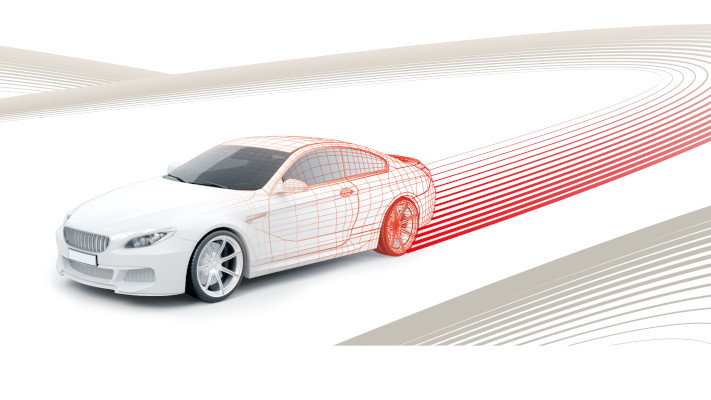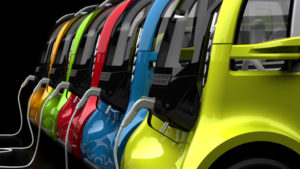E means efficiency
Electric mobility wins the battle for the future.
Electronic vehicles are already driving on our streets – though in limited numbers. There are still certain technological challenges to master and to create the appropriate framework before environmentally-friendly, highly efficient e-vehicles will be available for everyone.

Pure electric vehicles are the broadest example of e-mobility. Their motor is based exclusively on batterypowered electric motors. They are driving without generating emissions, are being noiseless, and are offering the same spaciousness as regular cars. Apart from their usefulness, e-vehicles are also offering driving pleasure. The continuously growing number of models varies from compact to sports cars. And there are more encouraging prospects: electric motors and their respective power electric components are almost maintenance-free and highly efficient. The energy costs per kilometer driven are currently only approx. one third of the cost of a traditional combustion engine. The newest e-models have a reach of more than 500 km per charge. Even if the reach depends of the usage and could be less, the reach is a valid one for everyday use. A factor could be, for example, the energy used for heating the car as the e-motor does not generate waste heat as a combustion engine does. Apart from the opportunity to charge an e-vehicle over night at home or during the day at the place of work, a public charging infrastructure is of great importance. The newest generation of charging stations enables charging of vehicles for 300 km reach in less than 15 minutes.
A motor for the environment
The origin and the development of the charging energy are pivotal: Germany has generated approx. 30 % of its energy from sustainable energies during the past year – and rising. The German government’s goal is to increase the portion to 80 %. For comparison: the government program regarding e-mobility aspires to 6 million e-vehicles by the year 2030. Estimates say that the energy needed would be less than 2 % of the overall energy needed. The highlight: e-vehicles would not only be using electric energy, but would communicate in an energy network. They then would be able to actively feed it into the net based on an intelligent management.
Mitsubishi Electric: On the cutting edge of electro-mobility
Although Mitsubishi Electric does not produce cars, the company is strongly connected with the technology of electro and hybrid technology. In the last 20 years more than 10 million electro vehicles are equipped with Mitsubishi Electric power semiconductors in the drive train in 1997, Mitsubishi Electric started the volume production of power semiconductors for electro and hybrid vehicles. In total, the company has more than 60 years experience with semiconductor technology. The company has been partnering with the European automotive industry and its suppliers to meet these challenges since 2011. The power semiconductors are at the core of the e-motor management and a central element for a high efficiency and reliability – the electric energy for the motor is running through them. It is of crucial importance for Mitsubishi Electric to contribute to the overall concept of e-mobility, so that the value chain from generating sustainable energies via the energy transport up to the charging infrastructure works reliably and can be extended. They are cognizant of one fact: The automotive world and the energy landscape are facing a transformation. Hence, the company will actively shape this together with its customers. According to the company’s motto of “Changes for the Better”.




